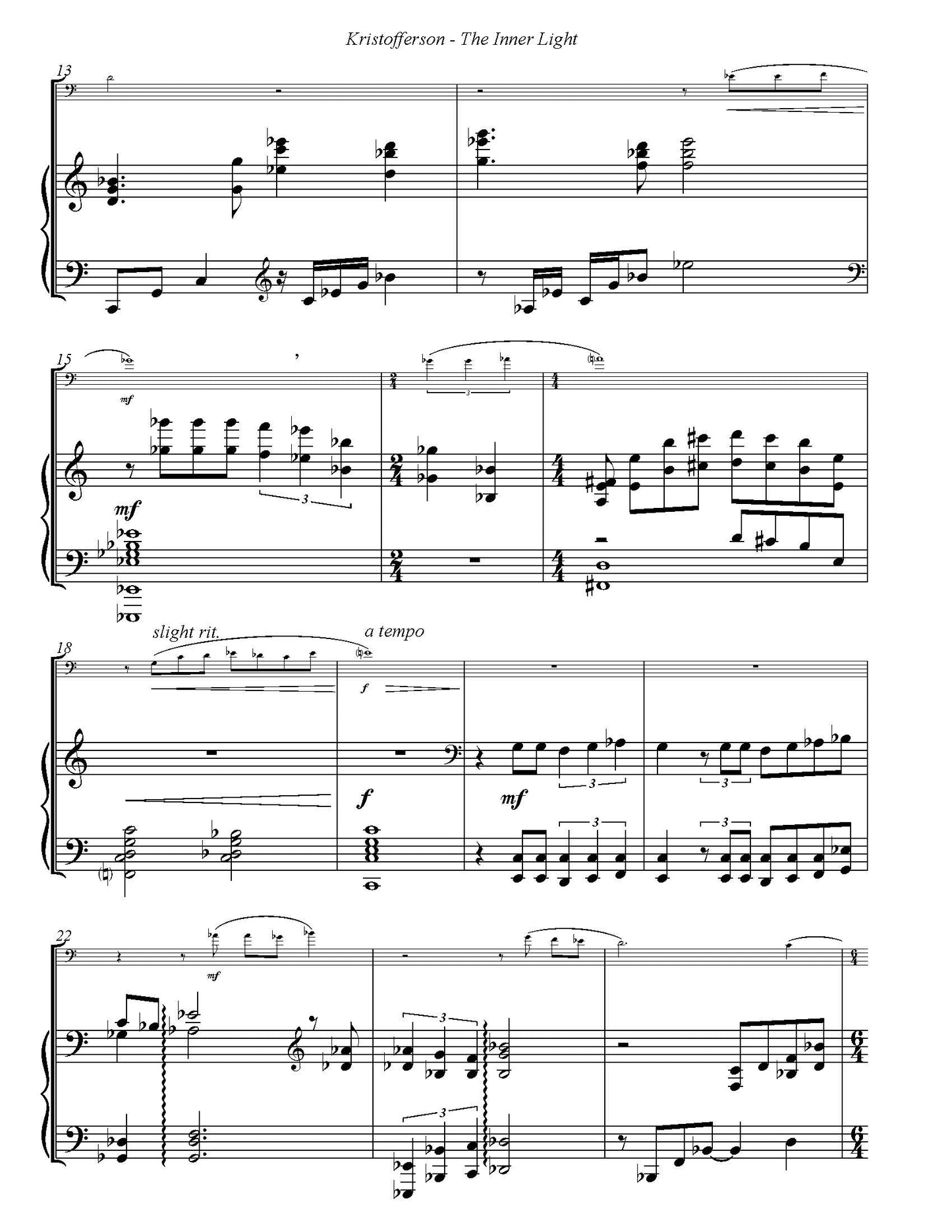My Store
Kenley Kristofferson: The Inner Light for Trombone and Piano
Kenley Kristofferson: The Inner Light for Trombone and Piano
Couldn't load pickup availability
While I appreciate my share of dark music, I often drawn to brighter and warmer kinds first. The title of this piece plays off of an interest shared by Dr. Nora Wilson and I: Star Trek: The Next Generation, which connects to the notion of “bright music.” While much of science fiction these days is dark, more traditional sci-fi aims to show us something about society in the present while unfolding a story about the future. As a young kid, I was keenly aware that Star Trek was not about explosions or rampant conflict, but about how we can use diplomacy and science to improve humanity. It was a message that shaped how I look at the world today; that the future can bring a better version of ourselves.
This is the second piece I’ve composed for Dr. Nora Wilson, and it’s the second piece about light, albeit in a different context this time around. I’ve specifically tried not to ascribe too much of my own meaning to specific sections of this work, but while there aue many moments of warmth and resolution, the energy of the trombone part propels this work not to stay at rest for too long. I often think about this piece reflecting how hard it is to do the right thing, even when we know what it is. The opening section is quite restful until the piano incites motion and unsteadiness in the meter. The second section features a rhythmic and soaring trombone cadenza, as though the inner turmoil is mounting. When it ends, the music finds itself lost and uncertain and eventually ends in resolution, but not in the same key in which we started, as though we haven’t found a solution to our problems; but rather, one we can live with.
Rather than have the harmony move in traditional fourths or fifths, the phrases move in thirds. It creates an interesting mobility between key centers, especially as the quality of chords we expect
changes from major to minor and moves the music somewhere we don’t necessarily expect.
Share






